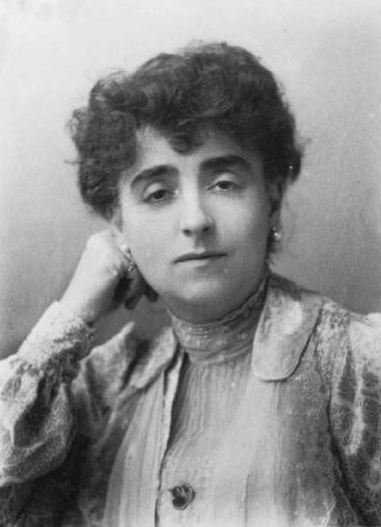Composed 1902 (1902) | Catalogue Op. 107 | |
 | ||
Movements | ||
Cécile Chaminade's Flute Concertino in D major, Op. 107, was composed in 1902 for flute and piano and later arranged for flute and orchestra.
Contents
Background
Scholarship indicates that the Concertino was commissioned by the Paris Conservatoire in 1902, presumably as an examination piece for flute students, where the celebrated French flautist and teacher Paul Taffanel, to whom the Concertino was dedicated, taught. Among flautists, legend has it that Chaminade wrote the Concertino to punish a flute-playing lover after he left her to marry someone else, wanting to make a piece so fiendishly difficult that he could not play it (though he supposedly did manage). However, Chaminade had married a music publisher the year before the piece was commissioned, which lessens the validity of the legend. Not long after composing it, Chaminade orchestrated it for a London concert played by her friend, flautist Marguerite de Forest Anderson.
The piece remains a standard and popular part of the flute repertoire. For example, it was voted #85 in the 2012 Classic 100 Music of France (ABC). Additionally, it remains one of Chaminade's only pieces in contemporary repertoire.
In his Oxford Companion to Music, Percy Scholes wrote that the Concertino had "no intricacy of texture, no elaboration of form, and no depth of feeling... [yet was] so tasteful in conception and execution as to disarm the highbrow critic."
Structure
The concertino is scored for solo flute, with piano or orchestral accompaniment, with a flute (besides the solo instrument), a piccolo, two oboes, two clarinets, two bassoons, four horns, three trombones, tuba, timpani, harp, and strings. Lawrence Gilman wrote that "A remarkable feature of the work is its use of the orchestra's heaviest artillery in the accompaniment, for which three trombones and tubas are requisitioned (the trumpets take a holiday).
The composition opens with a broad melody that has a highly decorative solo part and is regarded as quite demanding for the flautist. After a more active central section, marked Più animato agitato in the score, there is a short oboe phrase that leads into a cadenza for the soloist. The piece concludes with a reprise of the opening melody and an animated coda.
This one movement piece, although one source suggests is in rondo form, is more likely in the form ABCA, with a codetta separating sections B and C, and a coda following the final A section. Following section C and before the flute cadenza, there is a 15 measure "section" where the original melody of section A returns. The main characteristic of rondo form is the return to the A section after each new idea has been presented. In the Concertino, however, the original melody does not appear again until after section C, just before the cadenza, and then again after the cadenza, with the final return to section A at measure 112.
